
While not making an actual appearance in the story until later, the Blackbeard pirates are first referenced when the Straw Hat Pirates land on Drum Island. The king of Drum, Wapol, has fled the country as a result of the Blackbeard crew attacking.
The crew make their first appearance in Jaya, where they are playing "games" of fate, such as handing out explosive apples or shooting birds to see which ones die quickly and testing strength. When Luffy meets Blackbeard himself in a bar, they immediately form a rivalry. Luffy hates the bar's pie, and Blackbeard loves it, while Luffy loves one of the bar's drinks, Blackbeard hates it, which leads to them challenging each other to a fight. Later on, after the Bellamy Pirates taunt them for believing in Sky Island, Blackbeard assures the Straw Hats that it does exist and in response to Bellamy's notion of a "New Age", states that people will never stop dreaming. Once Blackbeard discovers Luffy's high bounty, he and his crew decide to capture him, and pursue the Straw Hats to the Knock-Up Stream. Their ship is destroyed by the stream, and Luffy escapes to Skypeia.
The Blackbeard Pirate crew is seen again after the events of Enies Lobby. After reading of Luffy's exploits, Blackbeard understands that his bounty will increase a great deal. He once again commits to pursuing Luffy, but is stopped by Portgas D. Ace. During a short battle, Blackbeard reveals his Devil Fruit abilities, and defeats Ace, turning him in to the World Government to attain Shichibukai status.
Marshall D. Teach
Captain
 Marshall D. Teach also known as Blackbeard (Kurohige), is a former member of the Whitebeard Pirates, who left after killing the commander of Whitebeard's fourth division. His ultimate goal is to become pirate king, like many other pirates in the Grand Line. Teach spent decades with Whitebeard's crew for the express purpose of finding the Yami Yami no Mi. When Fourth Division Commander Thatch found the Devil Fruit he desired, Teach killed him without hesitation, claiming the fruits powers for his own. The Yami Yami no Mi grants Teach the ability to create and control gravity fields, represented as a flowing "darkness". Teach can use the gravity to absorb matter and energy, to draw in opponents from a distance and can also eject absorbed matter in a violent explosion. The most terrifying aspect of the powers granted by the Yami Yami no Mi is the ability to nullify other Devil Fruit powers through physical contact with the user. Even users of the Logia Devil Fruit type, normally invulnerable to attacks, can be harmed in this manner. Although the Yami Yami no Mi is a Logia type, Teach does not have the ability to transform into his element like other Logia type users. Likewise, he can not avoid damage like other Logia users, and in fact takes more damage due to the nature of his power. Teach's physical abilities are substantial even without the aid of his Devil Fruit; he is responsible for the three scars that cross Red-Haired Shanks' eye.
Marshall D. Teach also known as Blackbeard (Kurohige), is a former member of the Whitebeard Pirates, who left after killing the commander of Whitebeard's fourth division. His ultimate goal is to become pirate king, like many other pirates in the Grand Line. Teach spent decades with Whitebeard's crew for the express purpose of finding the Yami Yami no Mi. When Fourth Division Commander Thatch found the Devil Fruit he desired, Teach killed him without hesitation, claiming the fruits powers for his own. The Yami Yami no Mi grants Teach the ability to create and control gravity fields, represented as a flowing "darkness". Teach can use the gravity to absorb matter and energy, to draw in opponents from a distance and can also eject absorbed matter in a violent explosion. The most terrifying aspect of the powers granted by the Yami Yami no Mi is the ability to nullify other Devil Fruit powers through physical contact with the user. Even users of the Logia Devil Fruit type, normally invulnerable to attacks, can be harmed in this manner. Although the Yami Yami no Mi is a Logia type, Teach does not have the ability to transform into his element like other Logia type users. Likewise, he can not avoid damage like other Logia users, and in fact takes more damage due to the nature of his power. Teach's physical abilities are substantial even without the aid of his Devil Fruit; he is responsible for the three scars that cross Red-Haired Shanks' eye.
Blackbeard shares his surname with the infamous Edward Teach, who series creator Eiichiro Oda has described as his favorite pirate.
Blackbeard is also one of the 7 people in One Piece to have the middle intial D.
 Jesus Burgess
Jesus Burgess
Helmsman
Jesus Burgess wears a mask similar to a Luchador. He is extremely strong, lifting an entire building during a battle with Portgas D. Ace. He is portrayed as being quite level-minded and serious, as he berates Blackbeard for his easy-going attitude after the crew's failure to capture Monkey D. Luffy.
Jesus shares his surname with real pirate Samuel Burgess.
 Van Auger
Van Auger
Snipper
Van Auger, nicknamed "The Supersonic", is first seen in Jaya, shooting down seagulls from a distance so far that the Straw Hat Pirates, who were watching, couldn't even see the island he was on. Van Auger appears calm and analytic even during battle.
Van Auger shares a name with real pirate John Auger.
Auger's name may also have something to do with the Latin word "auger", which is term for a fortune teller who studies the flights of birds to determine the future. This could be symbolic due to the fact that we first see Auger shooting down birds and explaining that it was "fate" for the bird to be killed. Auger also refers to his gun's barrel.
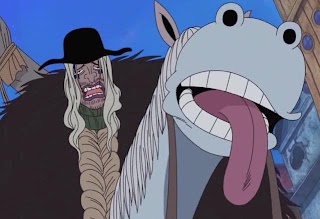 Doc Q
Doc Q
Doctor
Doc Q is the crew's doctor. His nickname is 'Shinigami' which literally means God of Death. He first appears when the Straw Hat Pirates disembark at Mock Town, offering explosive apples to pirates. Doc Q and his horse, Stronger, are portrayed as very sickly and weak, although they have little problem fighting Ace during his battle with the Blackbeard crew
Lafitte
Navigator
Lafitte is first shown when he joins the meeting of the Shichibukai and the Navy to determine the replacement for Sir Crocodile in order to recommend his captain. He is described by Tsuru as once being a well respected policeman in West Blue who became a pirate after being exiled from the police force for excessive violence. He is incredibly pale, though this appears to be makeup, and is usually tap-dancing, even when walking or running. Even while wearing tap shoes, however, he was still able to silently sneak into the Shichibukai meeting. Logically, this means that he must have teleported, walked in on his hands, or (quite possibly) flew in. There is fan speculation that he is a skilled user of Rokushiki as shown in the anime episode where Marshal D. Teach clashed with Portgas D. Ace and the Soru technique can clearly be seen and heard.
He shares his name with Jean Lafitte, a famous real-life pirate.
 Blackbeard's flag is that of three skulls--one looking left, one looking forward, and one looking right.
Blackbeard's flag is that of three skulls--one looking left, one looking forward, and one looking right.
The crew's ship is a giant log raft with a number of cannons in the center of the outermost logs. It is destroyed by the Knock-Up Stream during their pursuit of the Straw Hats.










 Dragon's history remains mostly a mystery, thus it is unclear why Luffy was left to be brought up by his father Garp instead of himself. At some point he began the Revolutionary movement becoming its leader and his ideals began to slowly spread throughout the world. One by one countries slowly began to support him, though sometimes through war.
Dragon's history remains mostly a mystery, thus it is unclear why Luffy was left to be brought up by his father Garp instead of himself. At some point he began the Revolutionary movement becoming its leader and his ideals began to slowly spread throughout the world. One by one countries slowly began to support him, though sometimes through war. where he saved his son Monkey D. Luffy from Captain Smoker. He stopped Smoker from killing his son. He then warned Smoker not to interfere with Luffy's ambitions. At that moment a gust of wind passed through LogueTown blowing Luffy, Smoker andBuggy the Clown away. It's not known if he controlled the wind that blows off the marines at this point, but in the manga he did say the word "Storm" as the wind passed by and seemed untouched by it.
where he saved his son Monkey D. Luffy from Captain Smoker. He stopped Smoker from killing his son. He then warned Smoker not to interfere with Luffy's ambitions. At that moment a gust of wind passed through LogueTown blowing Luffy, Smoker andBuggy the Clown away. It's not known if he controlled the wind that blows off the marines at this point, but in the manga he did say the word "Storm" as the wind passed by and seemed untouched by it.
 Marshall D. Teach also known as Blackbeard (Kurohige), is a former member of the Whitebeard Pirates, who left after killing the commander of Whitebeard's fourth division. His ultimate goal is to become pirate king, like many other pirates in the Grand Line. Teach spent decades with Whitebeard's crew for the express purpose of finding the Yami Yami no Mi. When Fourth Division Commander Thatch found the Devil Fruit he desired, Teach killed him without hesitation, claiming the fruits powers for his own. The Yami Yami no Mi grants Teach the ability to create and control gravity fields, represented as a flowing "darkness". Teach can use the gravity to absorb matter and energy, to draw in opponents from a distance and can also eject absorbed matter in a violent explosion. The most terrifying aspect of the powers granted by the Yami Yami no Mi is the ability to nullify other Devil Fruit powers through physical contact with the user. Even users of the Logia Devil Fruit type, normally invulnerable to attacks, can be harmed in this manner. Although the Yami Yami no Mi is a Logia type, Teach does not have the ability to transform into his element like other Logia type users. Likewise, he can not avoid damage like other Logia users, and in fact takes more damage due to the nature of his power. Teach's physical abilities are substantial even without the aid of his Devil Fruit; he is responsible for the three scars that cross
Marshall D. Teach also known as Blackbeard (Kurohige), is a former member of the Whitebeard Pirates, who left after killing the commander of Whitebeard's fourth division. His ultimate goal is to become pirate king, like many other pirates in the Grand Line. Teach spent decades with Whitebeard's crew for the express purpose of finding the Yami Yami no Mi. When Fourth Division Commander Thatch found the Devil Fruit he desired, Teach killed him without hesitation, claiming the fruits powers for his own. The Yami Yami no Mi grants Teach the ability to create and control gravity fields, represented as a flowing "darkness". Teach can use the gravity to absorb matter and energy, to draw in opponents from a distance and can also eject absorbed matter in a violent explosion. The most terrifying aspect of the powers granted by the Yami Yami no Mi is the ability to nullify other Devil Fruit powers through physical contact with the user. Even users of the Logia Devil Fruit type, normally invulnerable to attacks, can be harmed in this manner. Although the Yami Yami no Mi is a Logia type, Teach does not have the ability to transform into his element like other Logia type users. Likewise, he can not avoid damage like other Logia users, and in fact takes more damage due to the nature of his power. Teach's physical abilities are substantial even without the aid of his Devil Fruit; he is responsible for the three scars that cross 
































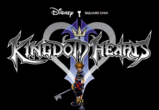





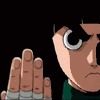


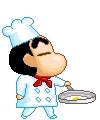





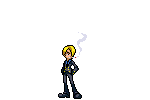
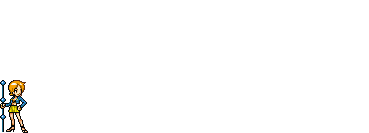
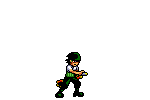




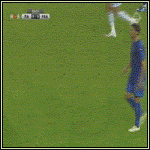

 br/>
br/>
















 >
>



















